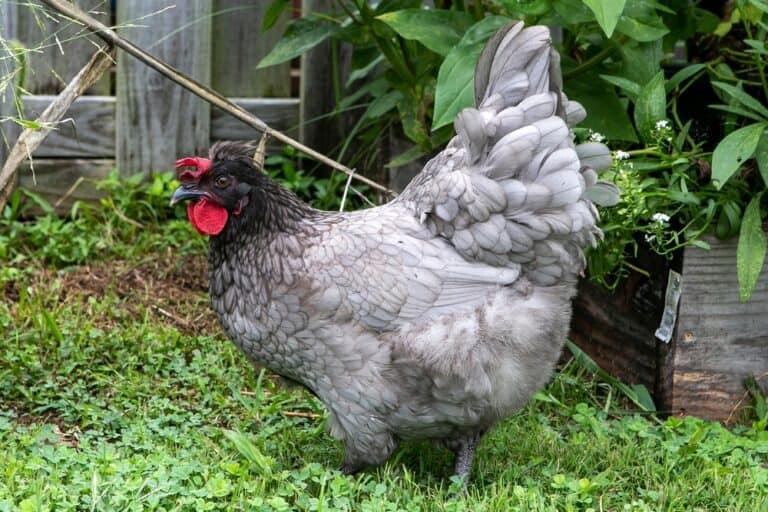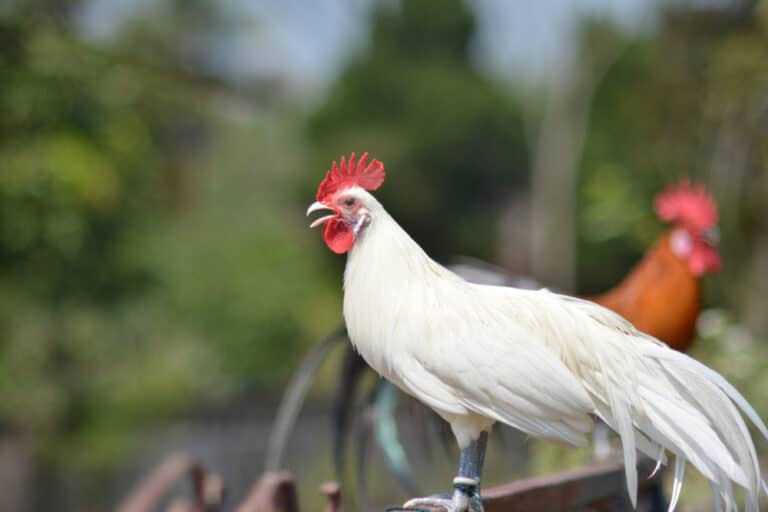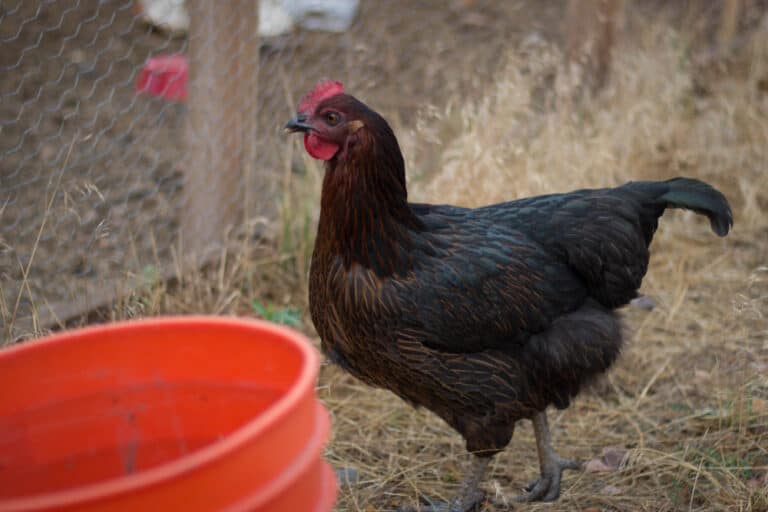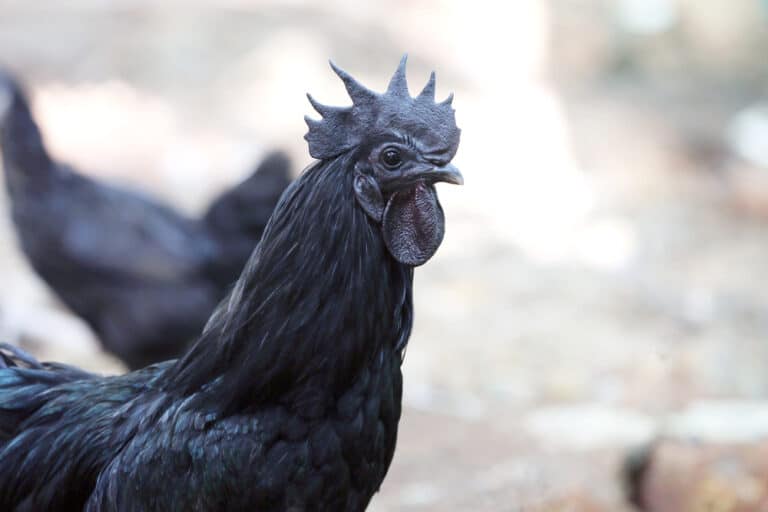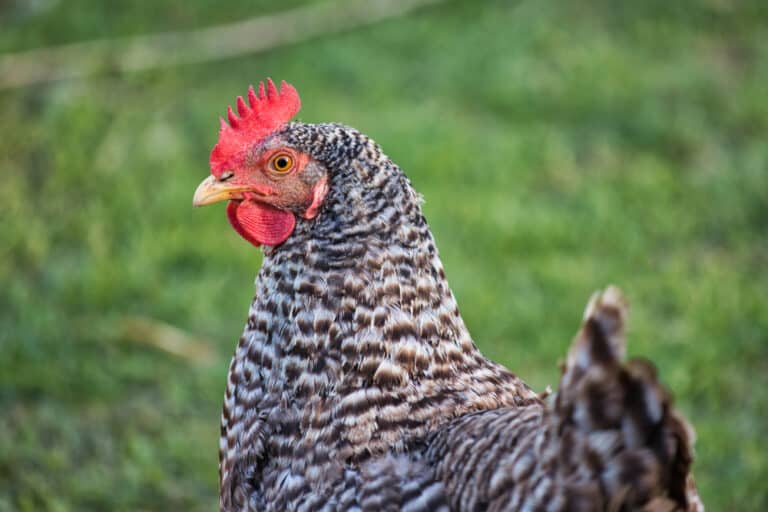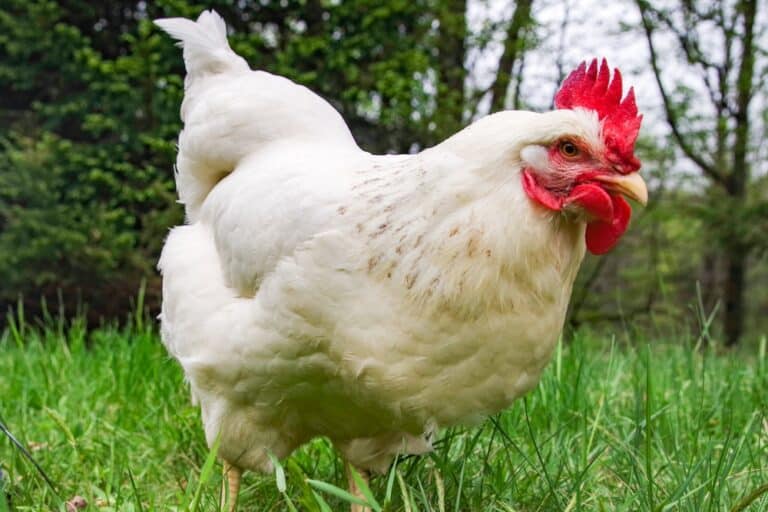Rhode Island Reds (or RIRs) are one of the most common chickens you’ll find in America. However, they’re not only native to the US since these chickens can also be found in Europe, Australia, and Africa.
But how did these guys become so popular on an international scale? What makes them so prominent? Here we’ll look at a complete guide to the Rhode Island Red Rooster, including its personality, how to breed it, and much more. Let’s get started!
History of the Rhode Island Reds
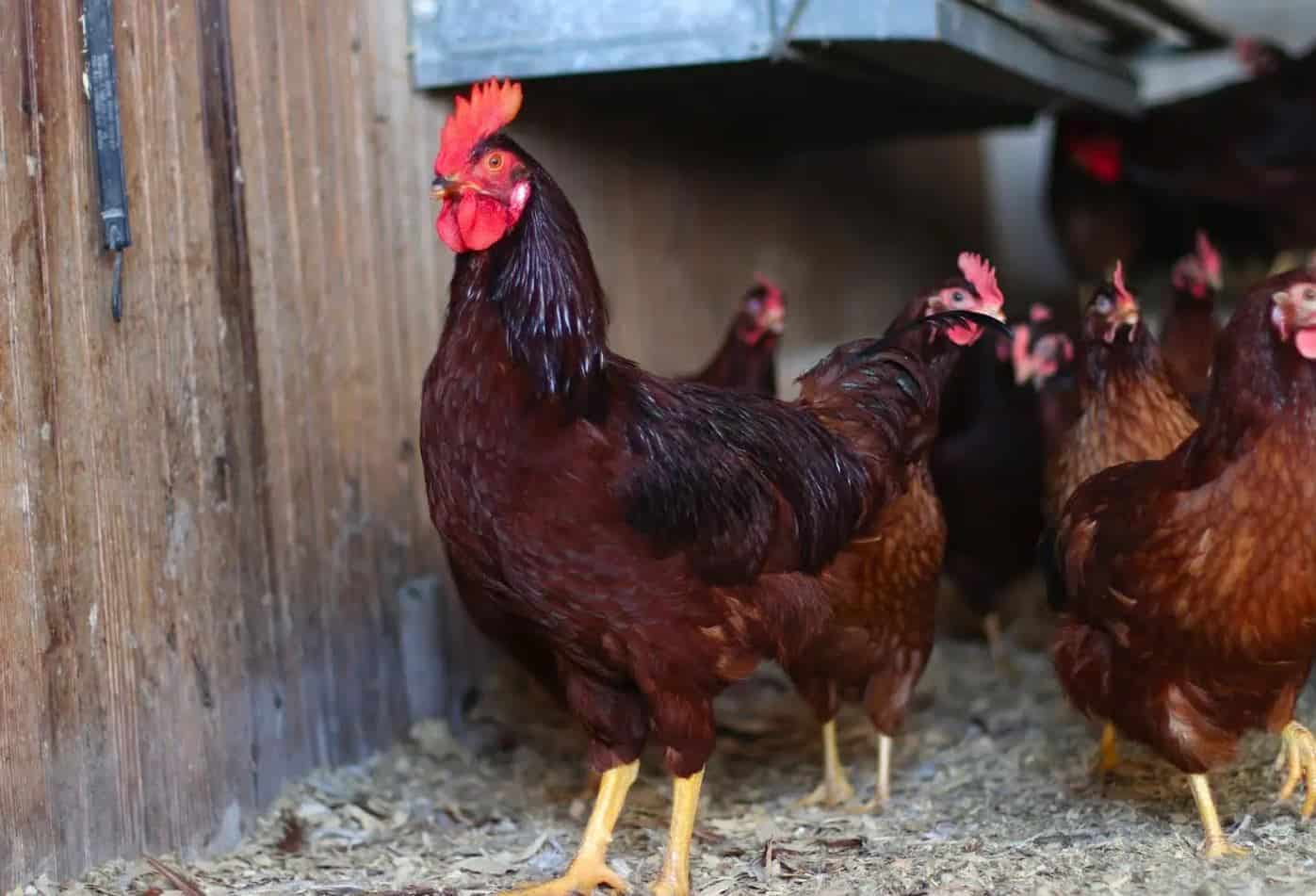
The origins of these chickens go all the way back to Rhode Island, Massachusetts. This was in the middle of the 1800s, hence, the name for this specific breed.
The breed was produced by crossing the Leghorn, Red Malay Game, and Asiatic stock. And note, there are two varieties of the Rhode Island Red chickens, which include the single comb and rose comb. No one really knows which among these is the original variety.
It was actually from the Malay that the Rhode Island Red got its deep, vibrant color, relatively hard feathers, and a strong constitution. Additionally, these chickens were also developed from the black-red Java, where it most likely got its rose-colored comb.
The breed was primarily developed in response to the demand for general-purpose (meat and eggs), brown egg-laying, yellow-skinned chickens. From there, the birds immediately became a popular breed in the commercial industry due to their quick growth and laying capabilities.
Before long, this breed also took hold of the attention of the exhibition industry, so a club was eventually formed in 1898. Rhode Island Red chickens were soon admitted to the APA (American Poultry Association) in 1904 under its Standard of Perfection.
Unlike other popular breeds, it didn’t take long for the fanciers to produce the bantam chickens. They were the exact replicas of larger fowls but measured around a third of the size.
The appearance of Rhode Island Red Roosters
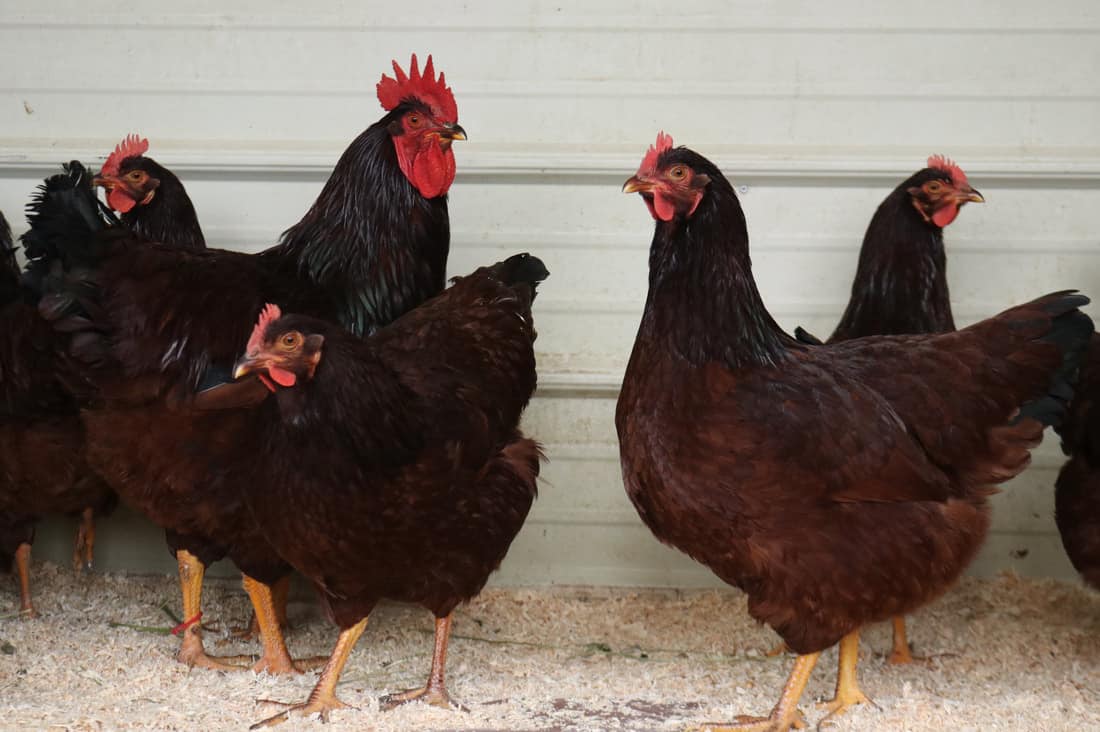
These roosters feature a distinct look, and you won’t mistake the Rhode Island Red rooster for any other chicken in the flock. This breed features a rectangular body and is often described as having a bulky form because of its size and color.
You can also describe the chickens as having a muscular build since they were originally bred as table birds.
Another thing to note is their movement. They can move swiftly and fast, however, they aren’t the aggressive types of chickens, making them excellent with kids and with larger flocks. Additionally, since these guys can go over high fences, you’ll need a secure chicken coop if you’re planning to add one to the bunch.
- Rooster Size – These roosters are larger than the hens. So, a fully-grown one can weigh up to eight and a half pounds, while the hens are only six and a half. The size difference means that the Rhode Island Red roosters can stand a couple of inches taller than the hens, thus, will have extended legs and necks.
- Comb – For their comb, the most common Rhode Island Red rooster breed features a single comb. However, there are rose-colored combs too, but these are less common than the latter.
The roosters (and also the hens) can have one comb or a rose comb. However, the thickness/size of the wattles and combs are more prominent on the roosters. Additionally, the rose comb types tend to be smaller than the single comb category.
- Color – The Rhode Island Red’s hues can range from a very light brick-like color to nearly all black. Despite that, the majority of the roosters will be a chestnut red or reddish brown. Nine out of ten times, their tail will be mostly or entirely black, and you might also notice some black feathers on their wings.
Distinguishing the Rhode Island Red Rooster from a Hen
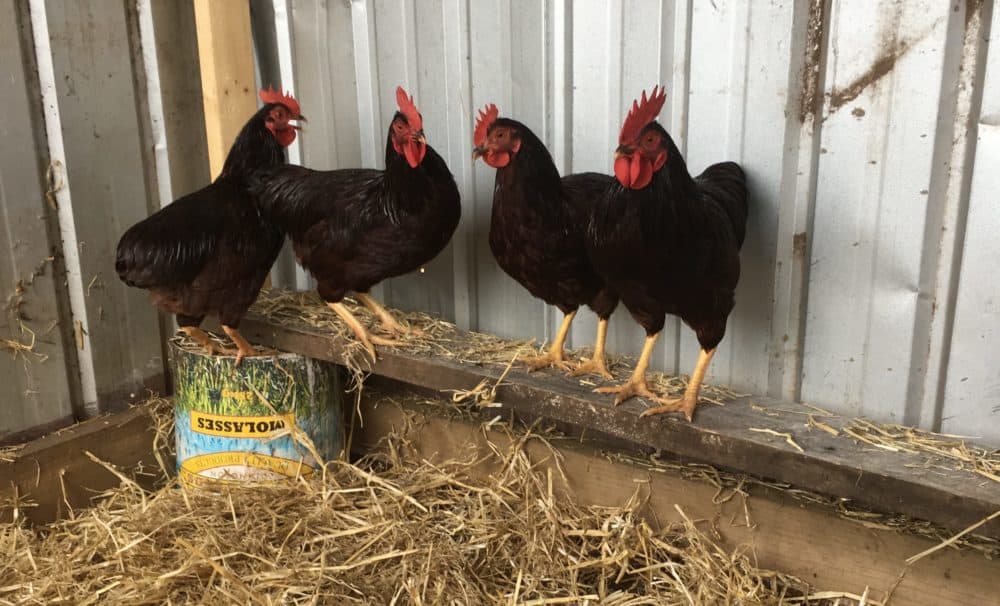
The Rhode Island Red rooster is bigger than the hen since these guys weigh between 8-9lbs, whereas the hens only reach 6.5 lbs.
When you observe a flock of Rhode Island Reds, you’ll notice that the rooster is tall and proud, featuring a regal stature. He has a longer neck, legs, and a larger deep-red comb. Usually, there’s only one rooster in the flock Because Rhode Island Red roosters don’t tolerate other males.
Additionally, the roosters can be distinguished by their mahogany feathers and long tails with a few hints of black and green.
Rhode Island Red Rooster Breeding
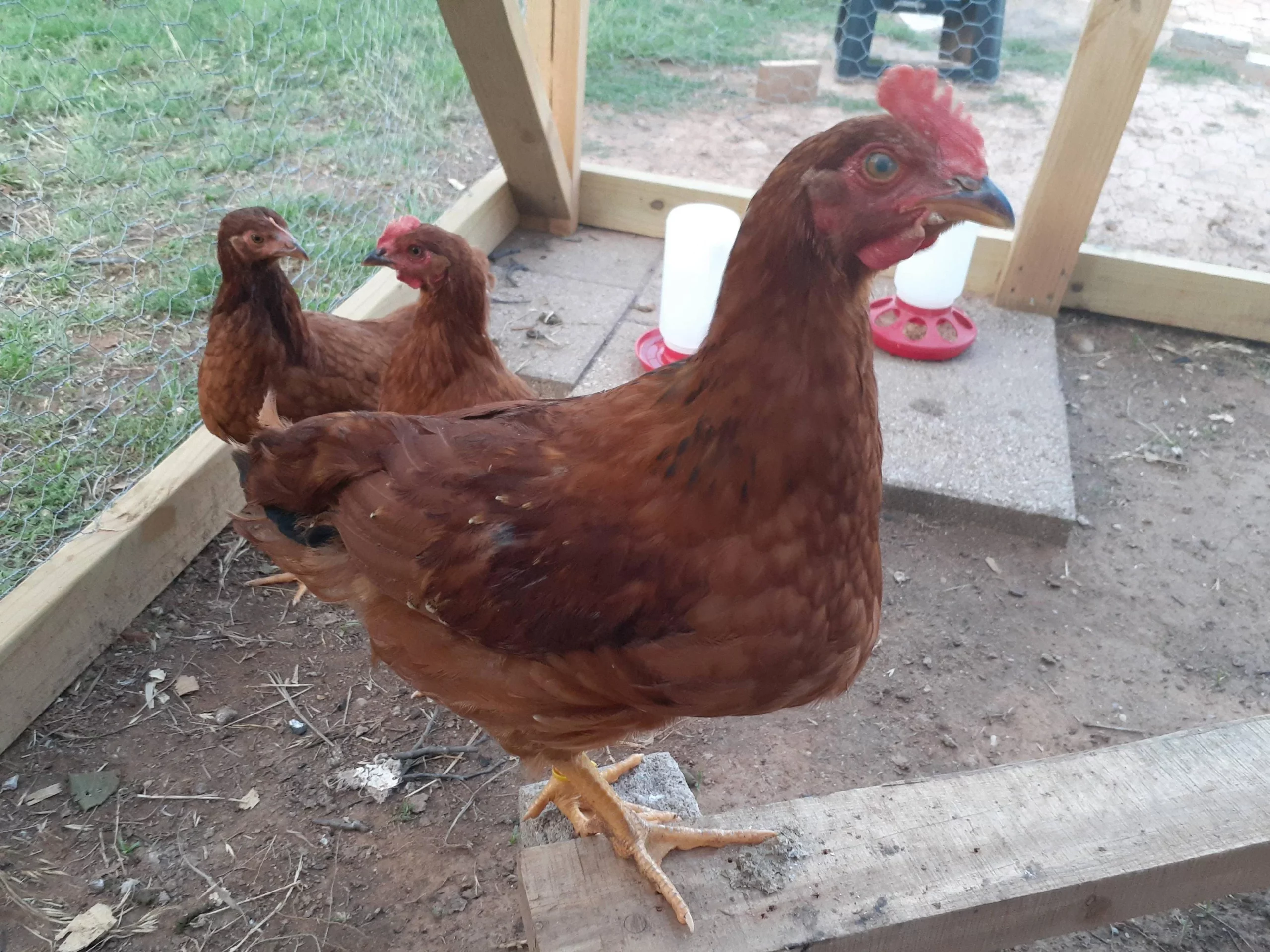
Contrary to hybrids, which combine two different breeds of chickens, the majority of poultry enthusiasts view Rhode Island Reds as a distinct breed. Therefore, a Rhode Island Red rooster and hen must breed to produce Rhode Island Red chicks.
Red Sex-link Crosses
A Rhode Island Red male and other chicken breeds have been crossed to create the hybrid known as a Red Sex link. As a result, there won’t be Red Sex-Link offspring from a pair of Red Sex-Link parents. For instance, you need white Delaware hens and Rhode Island Red roosters for a red sex link. Technically, any red rooster and white hen can create a red sex link.
The Red Sex Link is a hybrid. So, since neither of those two breeds of chicken can be crossed to create another one. Due to their inability to produce another purebred, the Red Sex Links are typically rendered useless for breeding but these chickens are bred for their productivity.
Making a Red Sex Link
Today, the Rhode Island White, White Plymouth Rock, or the Delaware hens can cross with the Rhode Island Red male. This will produce a Red Sex Link.
Golden Comet chickens are produced for the commercial egg market in the USA. They come from strains of Rhode Island Red roosters, then mated with a White Rock or Rhode Island White hen. The latter should be the silver factor instead of the dominant white gene, depending on the hatchery preferences.
This is why many people will keep a Rhode Island Red rooster. They will combine it with another hen to make a breed of chicken (such as the Golden Comet) which are incredible egg layers.
Behavior and Temperament
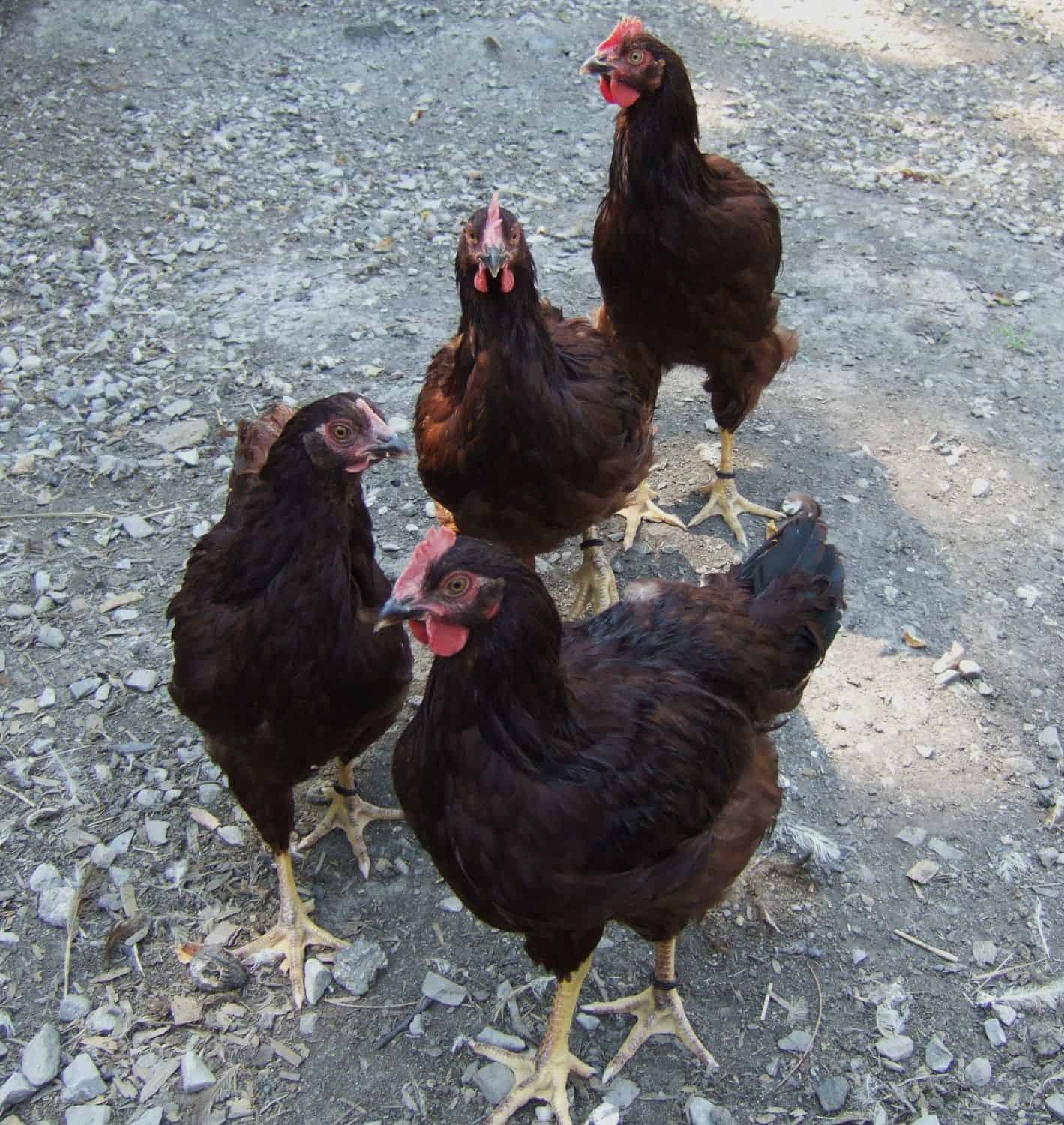
Roosters have a reputation for being aggressive. Due to its unpredictable nature, this breed might not be the best option for families with children or other pets.
Some claim that these breeds of birds are less sociable than others. Some believe they push themselves to the top of the food chain and may intimidate other breeds. However, as long as you don’t have too many roosters in the flock, it should be alright if you only intend to raise Rhode Island Reds. One rooster to every ten hens is known as the golden ratio.
Not all Rhode Island Red roosters will be aggressive and dominant, but some tend to show aggression toward people and other roosters. He will undoubtedly be a fierce opponent to predators who dare to approach his hens.
Crowing Age
The Rhode Island Red roosters usually start crowing upon reaching 18 to 20 weeks old. The timeframe is also when hens start laying eggs, so basically, it’s when they’ve reached full sexual maturity.
However, if one of the chicks begins to crow, it doesn’t mean you have a rooster. At a young age, the Rhode Island Red Hens tend to imitate roosters by crowing. So if it looks like a hen but it starts crowing, we suggest waiting for a week or two. This is the best time to see if it starts laying or not.
Pecking Order
Reds will be positioned fairly high in the pecking order. Despite their friendly nature, they will fall somewhere between mid and high in the flock hierarchy.
They won’t necessarily be mean, but they have occasionally been known to pick on very docile breeds. If you already have breeds like Silkies and Polish hens in your flock, you’ll need to be cautious when introducing a Rhode Island Red.
Caring for Rhode Island Red Rooster
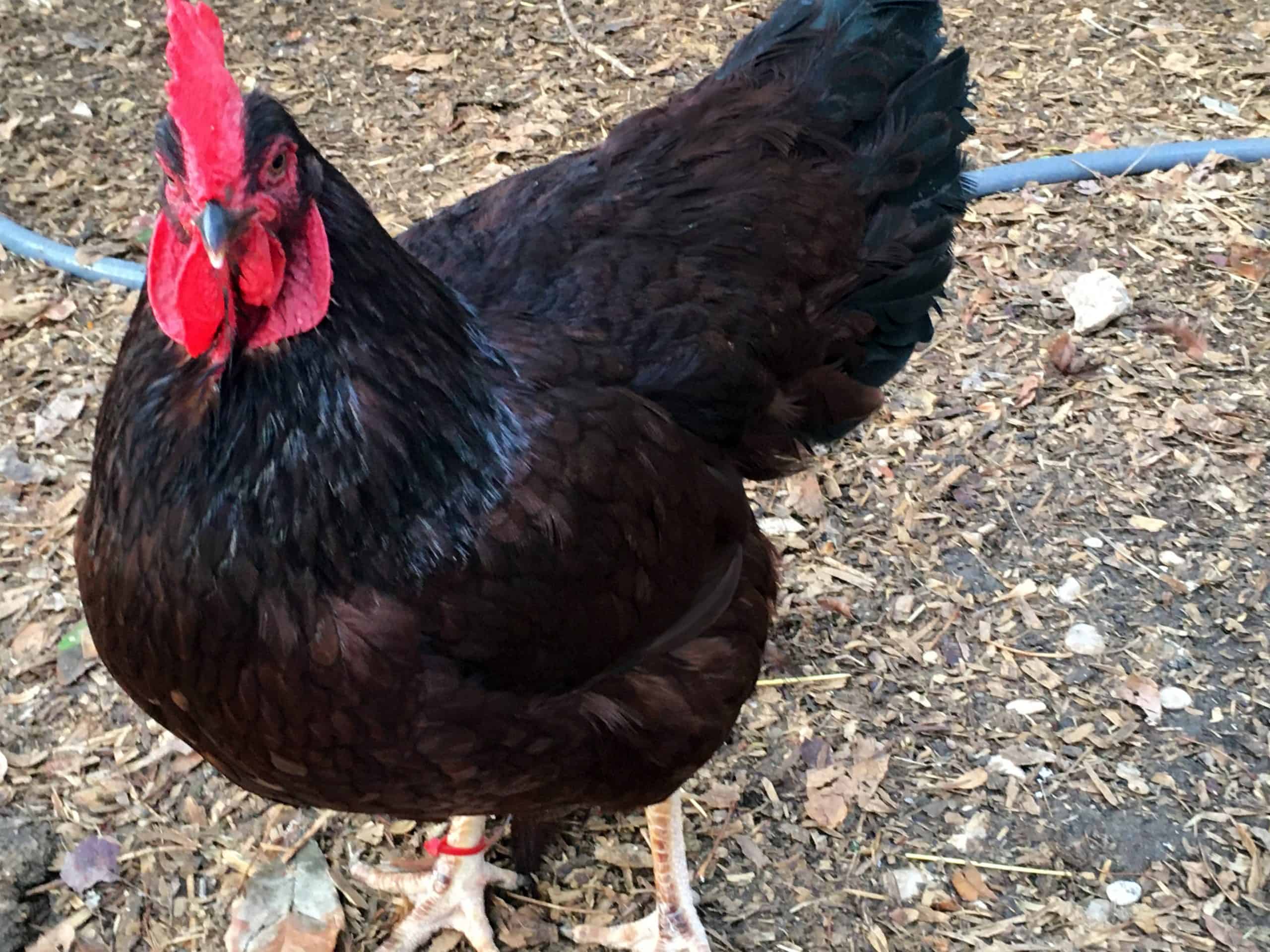
The Rhode Island Red Roosters are one of the easiest for newbie chicken keepers. They aren’t picky with food, and they even enjoy foraging, table scraps, and scratching for snacks. Although they like roaming, these roosters can also tolerate confinement.
Since these roosters are ranging chickens, they are better predators than other breeds. But despite that, they still need a coop to stay protected from danger, especially at night. They also need one to keep them dry and safe with a place to roost.
Providing each chicken around four square feet inside the coop and 15 square feet outdoors in a pasture or grassy run is ideal. Their perch spaces also need to be at least 8 to 10 inches so they can roost inside the coop.
Like all chickens, the Rhode Island Red Rooster needs constant access to clean drinking water. Finally, always keep the coop clean.
A Hardy Breed
The Rhode Island Red roosters are extremely adaptable and can endure a wide range of temperatures and weather patterns. They should be cool, calm, and collected when well-reared, frequently approaching their keepers specifically to receive their favorite treats. We occasionally give our chickens some of the best chicken scratches we can find.
Common Health Issue
Rhode Island Red Roosters are healthy chickens without genetic conditions and diseases that may specifically affect them. However, you must keep an eye out for contagious diseases like salmonellosis, coccidiosis, and Newcastle disease. Since cockfighting is common among Rhode Island Red Roosters, these diseases may spread easily.
Along with this, you’ll also want to protect against common chicken issues such as worms and mites. Whiles these are sometimes unavoidable, it can be helped with regular coop cleaning along with giving them a dust bath.
FAQs
1. Is a Rhode Island Red a Good Chicken?
The Rhode Island Red is a great option for people who are new to chicken ownership or for those who breed chickens in their backyard. This breed is ideal due to its easygoing nature and adaptability.
Renowned for their adaptability, these chickens can survive in a variety of conditions, cheerfully and in a carefree manner, tolerating rain, heat, and even snow. Even if you have no plans to breed them, these chickens are a pleasure to keep and will do a good job of protecting your hens.
2. Is a Rhode Island Red Rooster Aggressive?
The biggest drawback to having plenty of Rhode Island Red roosters is their naturally-aggressive behavior. There’s no denying that they’re one of the more aggressive chicken breeds, and usually don’t like being handled.
That being said, they rarely get aggressive if you leave them be. It’s also worth noting that they’ll get aggressive with other roosters if there aren’t enough hens in your flock.
3. Are Rhode Island Red Roosters Quiet?
The Rhode Island Red chickens barely make any noise, especially the hens. The roosters will crow occasionally and therefore you need to think about your close neighbors. That being said Rhode Island Reds are known for being one of the quietest breeds overall.
4. Do You Need a Rhode Island Red Rooster for Hens to Lay Eggs?
Absolutely not. One of the biggest misconceptions about chickens is that a rooster is important for egg production. The truth is that hens will lay eggs regardless of whether a male is there or not, so don’t worry about having roosters for this reason.
Roosters are mainly kept for three reasons which are to breed, for the protection of the flock, and for meat. But if you wanted productive hens, then you don’t need a rooster.
Conclusion
Rhode Island Red Roosters are wonderful chickens. Although they can be aggressive, they can fend for themselves by foraging and are low maintenance. You also won’t have to watch out for many diseases. As long as you keep them clean regularly, even mites and lice won’t be a big issue.
Aside from being low-maintenance, the Rhode Island Red Roosters are also great for red sex-linking chickens. If you plan to have different chicken breeds, go for these roosters. Hopefully, now you have all the information you need!

